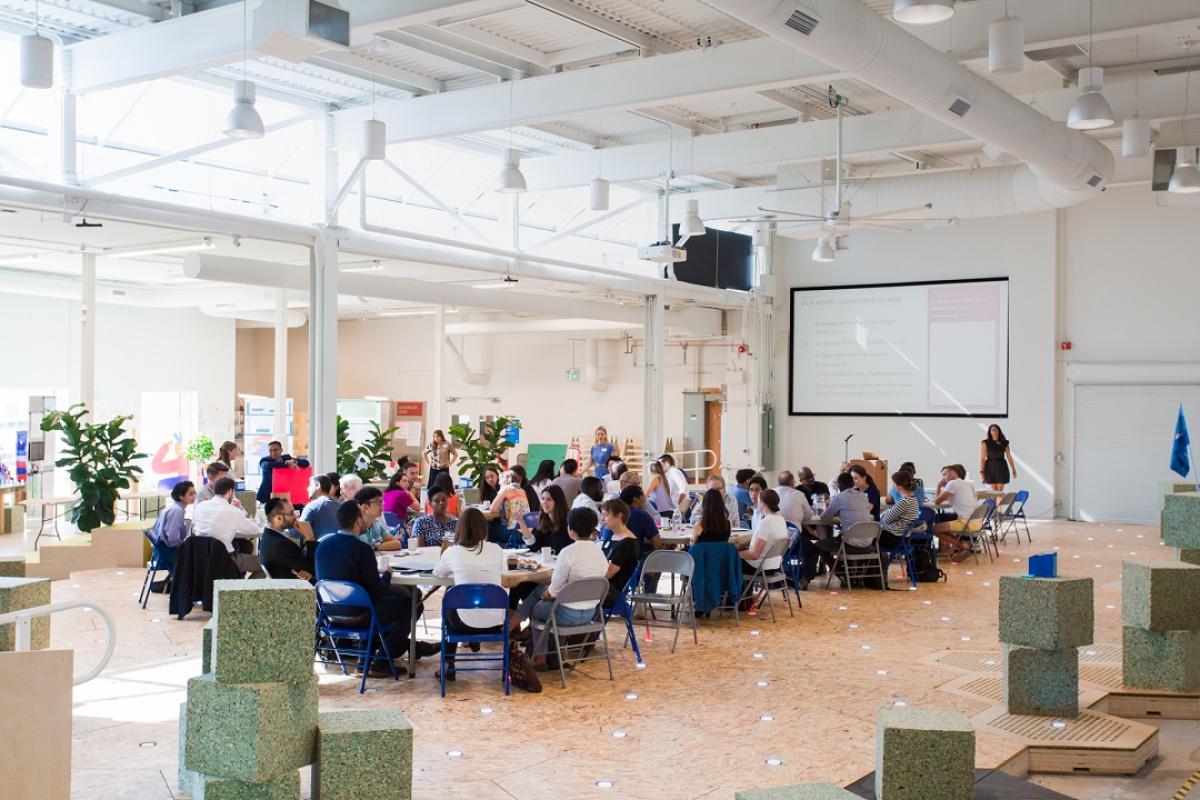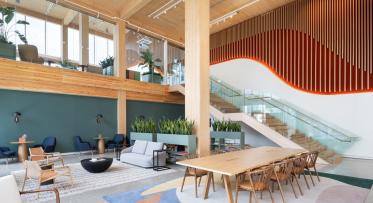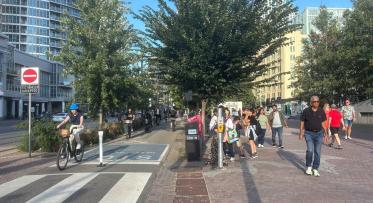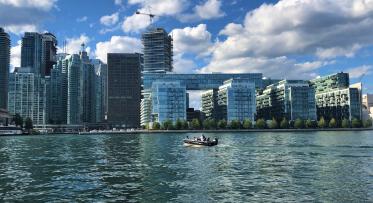Imagining the model 21st Century neighbourhood
The Vertical Living Design Jam, Monday, September 17, 2018
POSTED: SEPTEMBER 26, 2018 I COMPLETE STREETS, INNOVATION, CYCLYING, DESIGN, PARKS AND PUBLIC SPACES
By: Stephanie Chow
When we close our eyes and picture the Quayside neighbourhood, we envision a model for 21st century city-building that sets a new standard for sustainable, inclusive, complete community development. Achieving this vision is no easy feat, which is why we need to collaborate in a variety of ways with folks from diverse backgrounds to help us get there!
As part of the Sidewalk Toronto public engagement plan for the Quayside project, Waterfront Toronto and Sidewalk Labs recently hosted a series of daylong workshops, called Design Jams. The Design Jams brought together a group of multi-generational community members to work alongside subject matter experts and our project team members to examine specific elements of our current thinking for Quayside in a fun and engaging way. These workshops were focused on identifying practical and creative ideas that could help inform the Master Innovation and Development Plan, a draft of which will be presented to the public in early 2019.
The Design Jams took place over three days: September 17, 18, and 19. On each of the three days, a different element of what will become the Master Innovation and Development Plan was explored:
- Vertical Living: How can vertical living foster community?
- Water Connections: How do we expand the public realm into the water?
- People on Wheels: How do we make cycling the main mode of transportation along the waterfront?
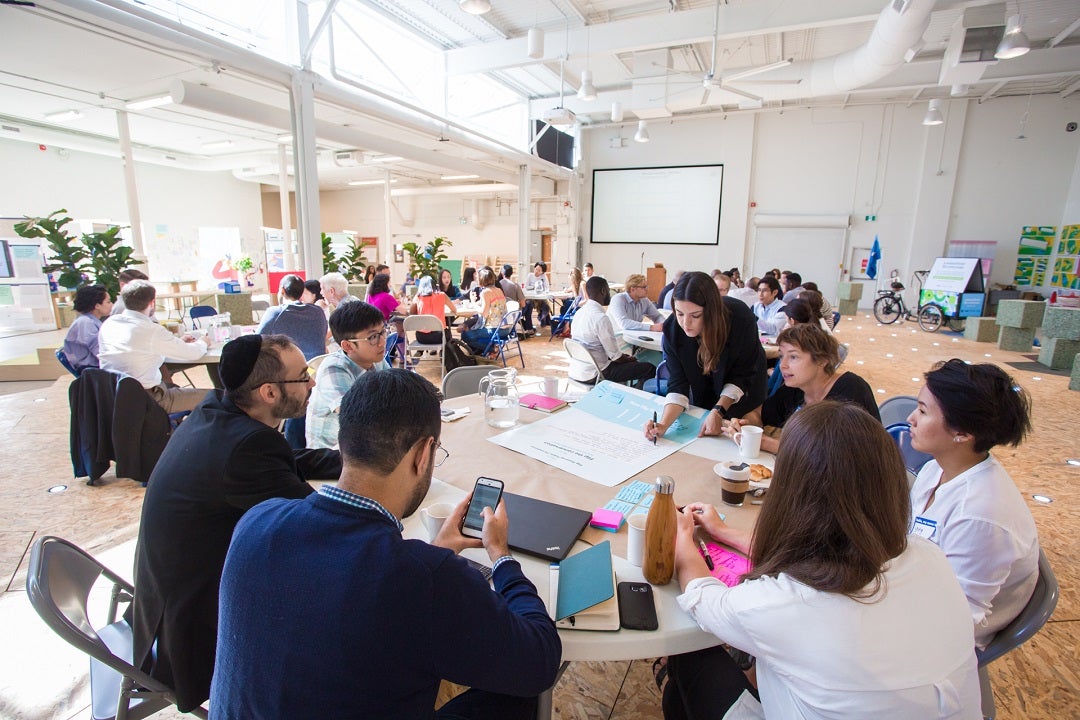 Sidewalk Toronto project team members, subject matter experts, and community members worked through a series of provocations and offered their perspectives on themes including Vertical Living, Water Connections and People on Wheels.
Sidewalk Toronto project team members, subject matter experts, and community members worked through a series of provocations and offered their perspectives on themes including Vertical Living, Water Connections and People on Wheels.
To ensure that we had a diverse set of voices each day, we asked project team members at Waterfront Toronto and Sidewalk Labs, as well as local neighbourhood associations, to recommend subject matter experts and community members who would be willing to engage on each of our three topic areas. From these suggestions, nearly a hundred participants from a variety of backgrounds offered their perspectives and helped us advance some of the ideas that we had initially presented at the third Public Roundtable Meeting in August.
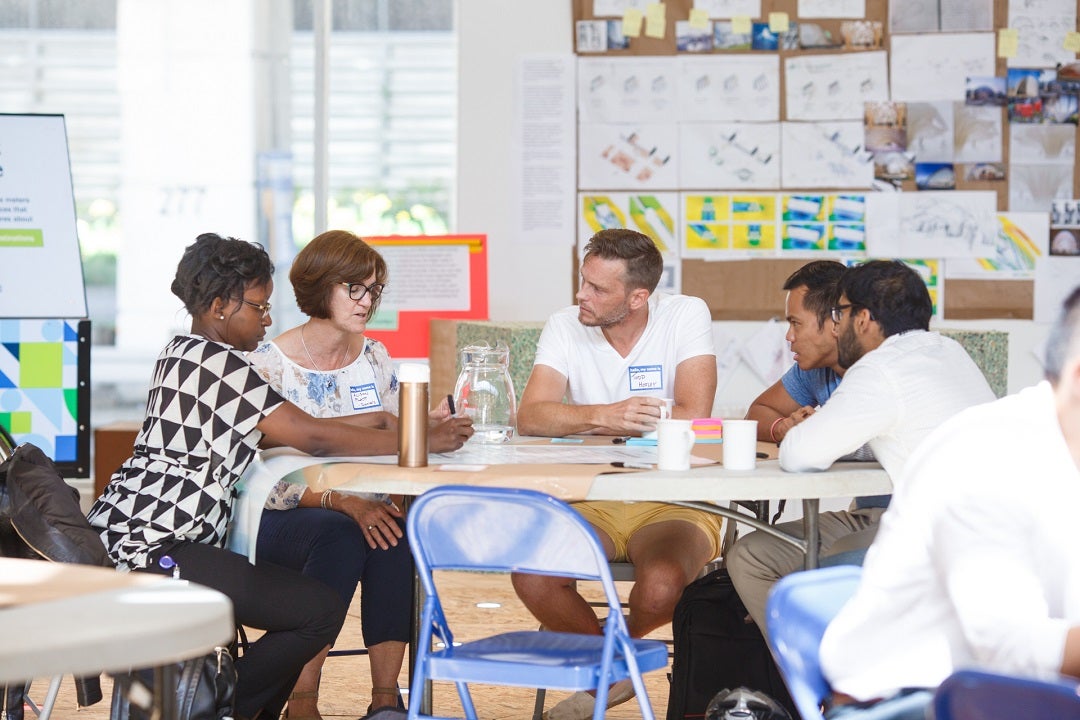 Design Jam participants engaged in facilitated conversation that prompted conversations around city design and implementation.
Design Jam participants engaged in facilitated conversation that prompted conversations around city design and implementation.
Each session opened with a powerful Indigenous Land Acknowledgement, reminding us all of our obligation to care for our land, water, and community, followed by anecdotes from local storytellers. Then in small groups, participants engaged in a series of activities that fostered conversations around city design, placemaking, and implementation.
The series of activities gave participants an understanding of the project’s objectives, challenged common perceptions, and provided first-hand experience of the work needed to build better cities. One activity had each table unpack a public perception related to their theme, before flipping the conversation to discuss how they might solve that problem. Another creative exercise had participants wearing brightly coloured “Sharing Goggles” that represented different community member perspectives, which encouraged them to consider urban challenges from different points of view. The last activity inspired participants to look at a provocation through three different lenses: a dreamer, a realist, and a critic. A group shareback from each table followed every activity, and a few moments were taken at the end of each day to allow participants a chance to share their biggest takeaways from the session.
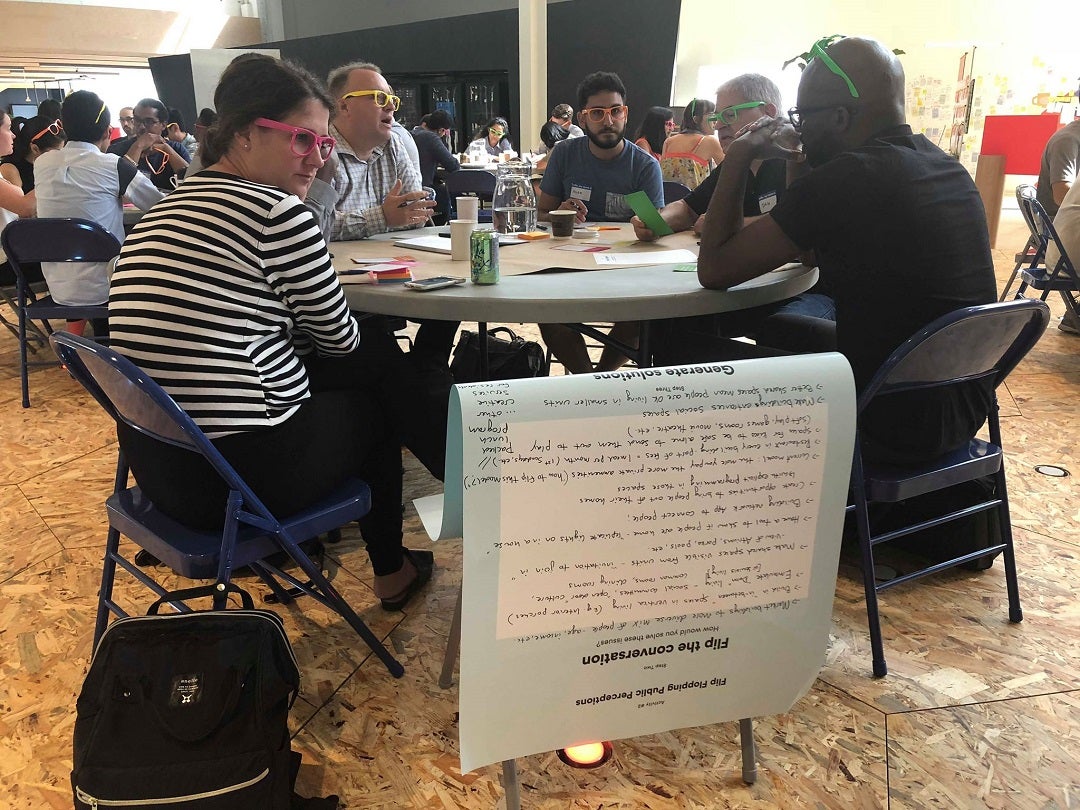 For one exercise, participants donned brightly coloured “Sharing Goggles” in order to consider urban challenges from different perspectives.
For one exercise, participants donned brightly coloured “Sharing Goggles” in order to consider urban challenges from different perspectives.
The ideas and suggestions generated by our Design Jam participants will be summarized in a report that will be posted to the Sidewalk Toronto website. The report will be carefully considered by our project team and will be used to help shape the emerging plan for this new neighbourhood.

